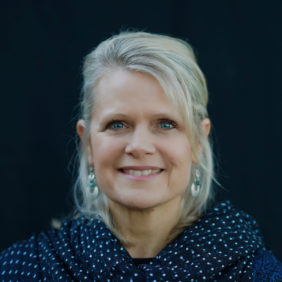Pay close attention anywhere in corporate America, the government, and even sports and you’ll realize: we haven’t had enough great leadership in the past…and we don’t have enough now. It’s time to change the way we talk about leaders, how we perceive people’s readiness to lead, and how we encourage the behaviors we want to see all leaders demonstrate in the future.
We know the value of great leaders and how they can positively impact an organization and their team members’ lives and beyond. They do the right thing, even when no one is looking. And they develop specific mindsets, skill sets and demonstrate specific behaviors consistently.
That said, not everyone in a leadership role today is ready for it. (That’s where leadership development programs and coaching come in.). And though leadership doesn’t have to walk hand in hand with authority, someone who has authority without great leadership skills isn’t ideal for any organization.
Leadership is more subjective, contextual, collectively sourced, and dynamically manifested than many traditional leadership frameworks would suggest. We value theory, models, and frameworks as useful tools for leadership—and they can be incredibly useful. But models and frameworks by themselves can’t fully capture the richness, the variety, and the depth of our human experiences in and around leadership. The truth is, we need our models and frameworks and we need our lived experiences, too.
Up until recently, the general thought process has been, “Well, this person has been anointed as our leader or granted authority, so they must be competent.” If you’ve been in the workforce for any period of time, you have likely seen examples that disprove this idea.
Shifting the conversation from authority = leadership to leadership = 360° influence is a better path. And by evolving our framework in the context of what is required to lead well in the world today, we will help many more aspiring leaders to build their readiness faster. We can give them the tools and the support they need now in order to grow.
Just as importantly, we can also identify those incumbent leaders who could serve the organization better in a different role. Envisioning professional growth and leadership as a one-way street, or a fixed one-size fits all ladder, limits everyone. Instead, picture a lattice or web of different opportunities, experiences and modes of contribution that are as unique to each person as a fingerprint.
What does this look like in practice?
Recognize a Need for Support
No one will lead perfectly from day one, and no one leads flawlessly all the time. There’s always room for growth and development, no matter how much leadership or life experience you have. Acknowledging your need for ongoing support and development demonstrates humility, especially when the team is aware their leader is intentional about and committed to growth.
A great example of this is Hubert Joly, former CEO and Chairman of Best Buy, Inc. He had a very successful career as a leader in business for many years before he arrived at Best Buy, But, he had never led a retail company before. Instead of pretending like he had all the answers, he famously told his head of global retail operations at their first meeting in front of the other senior staff, “I don’t know anything about retail, so I’m counting on you to teach me.”
A great leader, no matter whether they are a first-time supervisor or CEO, proactively seeks opportunities to learn how to relate to diverse people and lead a diverse team. This usually requires a mix of both training and deliberate on-the-job practice working with and supporting a diverse group of team members, something we would like to see more leadership development programs incorporate.
Encourage & Inspire Others
A little action and encouragement goes a long way, whether it’s giving kudos where it’s deserved or doing the work that inspires others to take action. When team members feel good about what they’re producing or watching their leaders make a positive impact, they’re more inspired to do the work themselves.
The best leaders we know encourage and inspire others largely by doing whatever is required to accomplish a goal in service of others. They see a need and fill it, often figuring out how to do it for the first time as they go. They routinely ask for help and freely admit what they don’t know and are trying to learn. Others see the work their peers or team members are doing and are inspired to support them.
IyaSokoya Karade is the owner and CEO of Athletic Arts Academy in Orange, New Jersey. Not only did she identify a need in her community, find a way to build and sustain a 10,500 sq ft gymnastics training facility without any prior experience running a business, but she has encouraged, inspired, and provided countless opportunities to other aspiring women to learn skills and start their own businesses along the way. That’s the power of great leadership in action – it lifts others along the way.
Give Opportunity
Leaders too often lean on their most experienced team members to take on critical projects, and it might seem logical to keep leaning on the same people who have had success before. All too often though, these “success stars” also happen to be people who are a lot like them (pattern recognition is a form of bias) This can stall a team or an organization because it doesn’t encourage as much innovation or empower fresh ideas.
A great leader realizes that identity matters and they act on that knowledge by building diversity into the fabric of their team. They consistently invite new talent to work on even the most high-profile project. Actively including and stretching less experienced team members in this way actually accelerates opportunity and leadership development for everyone.
Thinking differently about leadership begins with us recognizing its emergent properties. There’s so much we can do to support our incoming leaders so when it’s time for them to take the helm, they’re ready to do it.
If you’re ready to accelerate readiness among your organization’s emerging leaders, we’re here to help. Our team of interdisciplinary consultants can help you expand what’s possible for you, your team, and your organization. Check out Learn Lead Lift® Coaching for your organization today.


 Heather Leavitt-Martinez (she/her/hers) – Senior Product Manager
Heather Leavitt-Martinez (she/her/hers) – Senior Product Manager Wendy Ryan (she/her/hers) – CEO
Wendy Ryan (she/her/hers) – CEO Shawn Bunger (she/her/hers) – Senior Consultant
Shawn Bunger (she/her/hers) – Senior Consultant Crystal Whiteaker (she/her/hers) – Senior Consultant
Crystal Whiteaker (she/her/hers) – Senior Consultant Gail Finger (she/her/hers) – Senior Consultant
Gail Finger (she/her/hers) – Senior Consultant Monica Silkwood (she/her/hers) – Director of Operations and Experience
Monica Silkwood (she/her/hers) – Director of Operations and Experience Johanna Lyman (she/her or they/them) Senior Consultant
Johanna Lyman (she/her or they/them) Senior Consultant Sherri Horan (she/her/hers) – Senior Consultant
Sherri Horan (she/her/hers) – Senior Consultant
